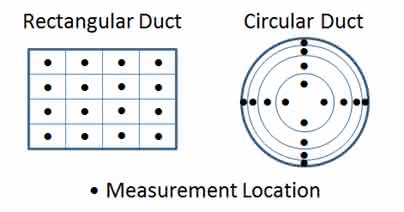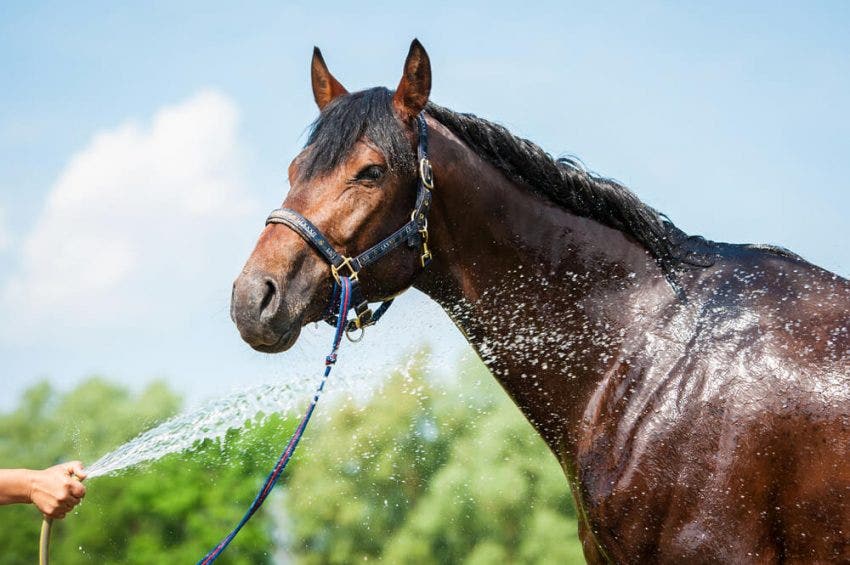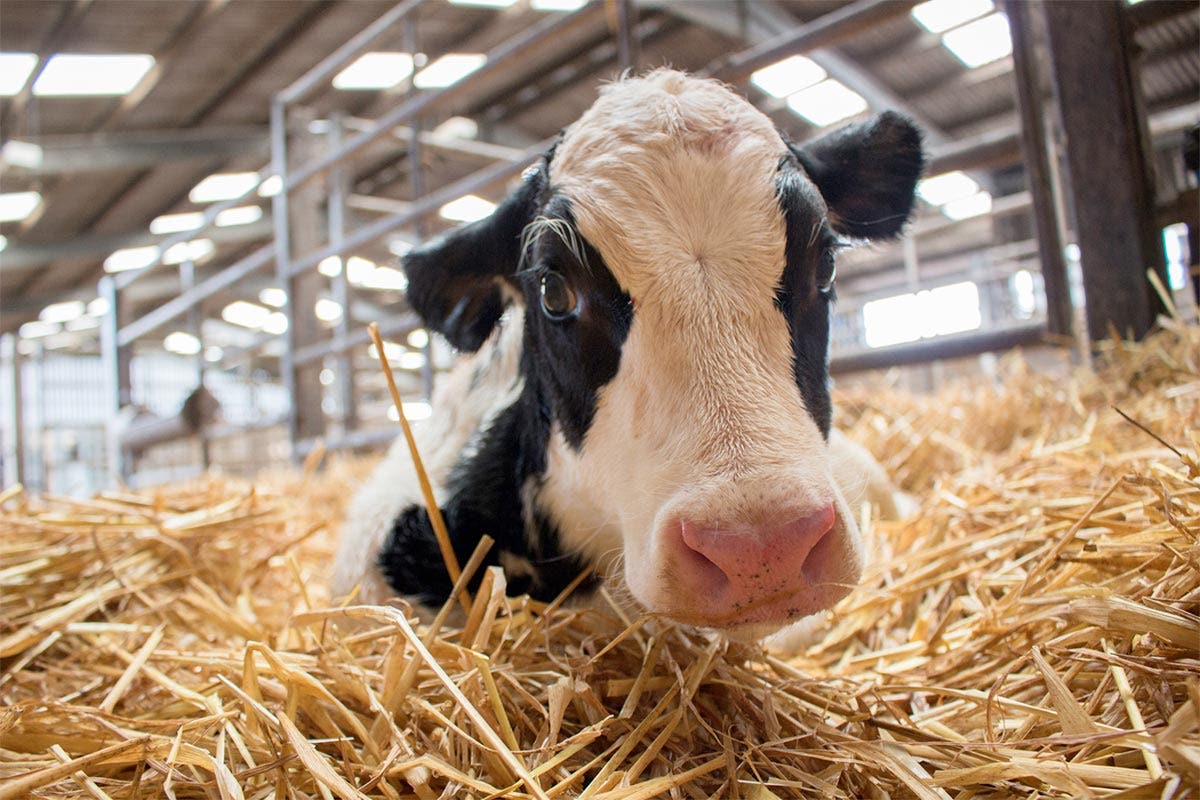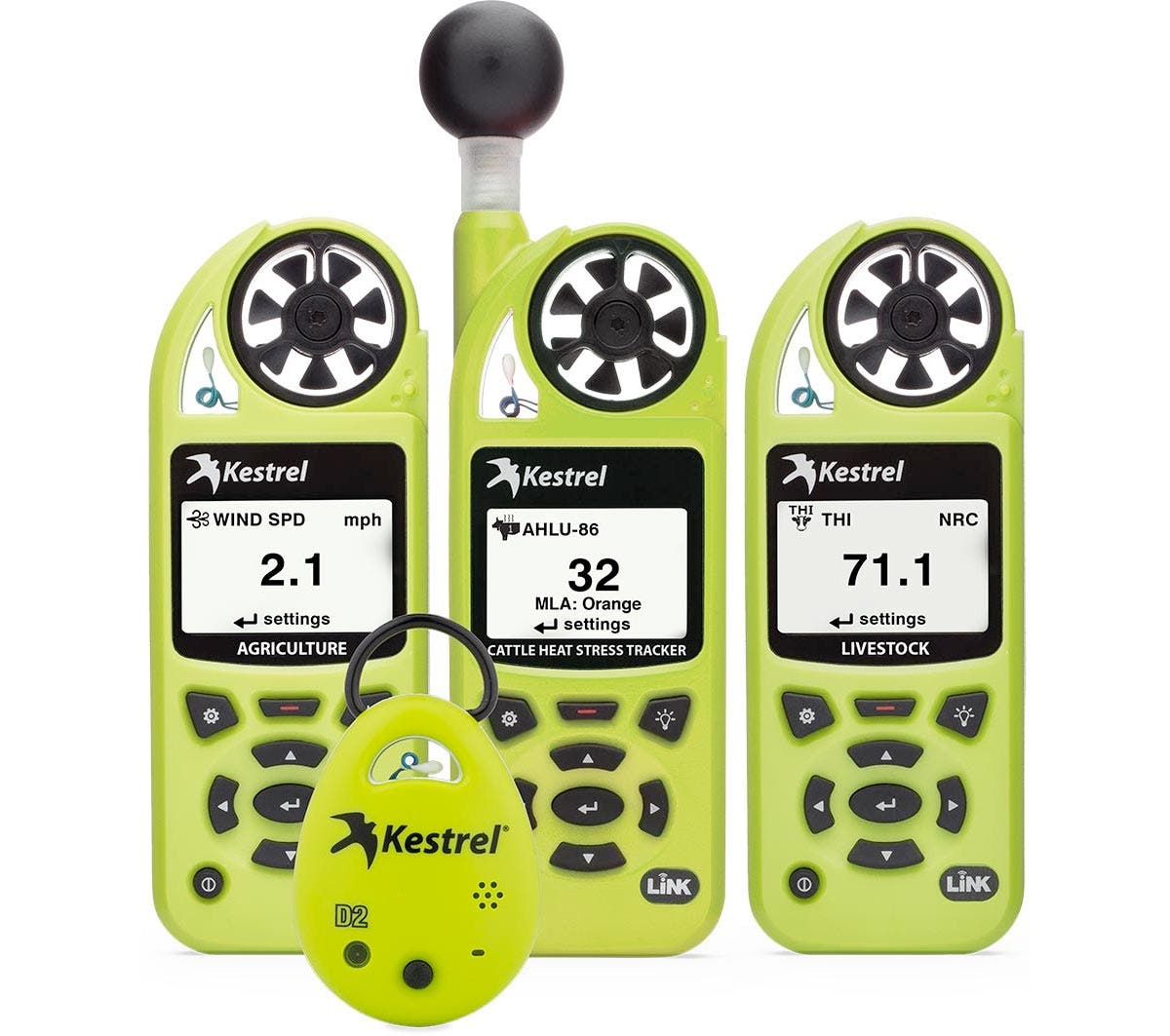Kestrel DROP D2AG Livestock Heat Stress Monitor
Livestock heat stress can cause serious health issues in your valuable livestock as well as reduced performance and productivity. Stay informed of heat conditions in the barn or during transport with the Kestrel D2AG Livestock Heat Stress Monitor. Multiple built-in environmental measurements mean your DROP D2AG can also be used for many other agricultural applications including hay and feed storage areas and greenhouses.
- The EASIEST way to monitor and track livestock pen, barn, or truck conditions to ensure animal health and well being.
- Measures temperature, relative humidity, heat stress index, dew point temperature and Temperature Humidity Index (THI).
- View data wirelessly via Bluetooth® low energy on your iOS phone or tablet with the free Kestrel LiNK app when within wireless range (up to 100’ or more line of sight.)
- See, save and share data from multiple DROPs with just one phone or tablet. Store thousands of data points and get months of logging on a single coin-cell battery - customize logging rate, connections and alerts.
- Rugged (drop tested to MIL-STD-810G standards), dust and waterproof (sealed to IP67 standards).
- 5-year warranty.
Kestrel DROP D2AG Livestock Heat Stress Monitor Overview
| Environmental Measures | |
|---|---|
| Dew Point Temperature | |
| Heat Stress Index | |
| Relative Humidity | |
| Temperature Humidity Index (THI) | |
| Temperature | |
| Tips For Taking Accurate Measurements | |
The Kestrel Drop D2AG Livestock Heat Stress Monitor is a very affordable rugged heat stress monitor that can be used in the barn, during transport, or anywhere livestock are housed. Simply hang in place wherever insight into conditions is needed, and access current conditions and historical readings with your iOS or Android device. Designed by Kestrel with input from some of the world's most respected experts in livestock heat stress, the Kestrel DROP D2AG Livestock Heat Stress Monitor is designed to help you MEASURE and MANAGE your animals’ heat stress, ensuring you MAXIMIZE your bottom line.
- Direct readout of Temperature Humidity Index (THI) – a dairy cattle specific measurement that provides guidance for when heat stress will start to reduce milk production.
- Also measures heat stress index, temperature, humidity and dew point for application to many types of livestock and agricultural applications.
- The EASIEST and most accurate way to monitor and track environmental measurements critical to agriculture in almost any farm, home or transport location – wet or dry, indoors or out.
- Easily hangs inside a barn, transport vehicle or wherever livestock are housed.
- Horse shippers - monitor trailer temperatures and heat index from inside your truck! Know when to find shade or take a break to water your horses.
- View data wirelessly via Bluetooth® low energy on your iOS phone or tablet with the free Kestrel LiNK app when within wireless range (up to 100’ or more line of sight.)
- Store thousands of data points and get months of logging on a single coin-cell battery - customize logging rate, connections and alerts.
- Rugged (drop tested to MIL-STD-810G standards), dust and waterproof (sealed to IP67 standards).
- 5-year warranty.
Visit the Cattle Heat Stress Minisite for a more detailed look at this breakthrough tool.
Use a DROP Anywhere livestock are housed- Small, Accurate, Rugged and Waterproof
Each DROP measures just 1 x 1.8 x 2.4 inches (24 x 46 mm x 60 mm) and weighs just 1.2 ounces (34 grams). DROP loggers meet military and international standards for water, dust and shock resistance (IP-67 and MIL-STD-810G) and are conveniently equipped with a sturdy d-ring for hanging wherever needed.
DROPs Are Powered by the Kestrel LiNK App
DOWNLOAD KESTREL LiNK FOR ANDROID
![]()
Kestrel LiNK is the free app that powers the DROP loggers. With Kestrel LiNK on your smart phone or tablet, you can view real-time readings from any DROP logger within wireless range (up to 100’ or more line of sight) via Bluetooth® low energy. Each phone or tablet can connect to up to 8 DROP loggers at the same time and store data logs from many more. Min/Max/Average readings are clearly displayed and the data log is viewable as a scrolling graph with detailed data for each logged point. The Kestrel LiNK app also allows adjustment of the logging interval and other settings as well as real-time threshold alerts. Readings can be updated as frequently as every 2 seconds and logging time and date are automatically updated whenever connected to your smart device. You can also send and share real-time and logged environmental data via email, Facebook or Twitter
Requirements:
- iOS 6 installed iPhone 4s, iPad 3rd Generation, iPod Touch 5th Generation and above.
- Android 4.3 and higher. Works with most Android devices with Bluetooth® low energy, including Samsung Galaxy, Nexus 4, Motorola Droid and other recent generation phones and tablets.
American-Made Quality and a Five-Year Warranty
Every Kestrel environmental instrument is designed and built entirely in the USA. Kestrel’s history and focus on quality and ruggedness is reflected in the DROP’s industry-leading five-year warranty. Kestrel has been building rugged environmental instruments that help people do their jobs more safely and efficiently for more than fifteen years and has built a reputation for reliability one meter at a time.
Compare All Livestock and Agriculture Models
| Measurements | DROP D2AG $99 | 5000AG $269 | 5500AG $319 | 5400AG $699 |
|---|---|---|---|---|
| yes | yes | yes | yes | |
| yes | yes | yes | yes | |
| yes | yes | yes | yes | |
| yes | yes | yes | yes | |
| yes | yes | yes | yes | |
| yes | yes | yes | ||
| yes | yes | yes | ||
| yes | yes | yes | ||
| yes | yes | yes | ||
| yes | yes | yes | ||
| yes | yes | yes | ||
| yes | yes | yes | ||
| yes | yes | |||
| yes | yes | |||
| yes | yes | |||
| yes | yes | |||
| yes | ||||
| yes | ||||
| yes | ||||
| yes | ||||
| yes |
Which Kestrel DROP is right for me?
| MEASUREMENTS | DROP D1 | DROP D2 | DROP D2HS | DROP D2AG | DROP D3 | DROP D3FW |
|---|---|---|---|---|---|---|
| Temperature | ✔ | ✔ | ✔ | ✔ | ✔ | ✔ |
| Relative Humidity | ✔ | ✔ | ✔ | ✔ | ✔ | |
| Dew Point Temp. | ✔ | ✔ | ✔ | ✔ | ✔ | |
| Heat Stress Index | ✔ | ✔ | ✔ | ✔ | ✔ | |
| Barometric Pressure | ✔ | ✔ | ||||
| Density Altitude | ✔ | |||||
| Temperature Humidity Index (THI) | ✔ | |||||
| Wet Bulb Temperature (Psychrometric) | ✔ | |||||
| Color Available | Red, Blue, Tan | Red, Blue, Tan | Orange | Hi-Viz Green | Red, Blue, Tan | Orange |
| Buy Now | Buy Now | Buy Now | Buy Now | Buy Now | Buy Now |
- Drop-Tested to MIL-STD-810G
- Floats
- LiNK Wireless Communication to Mobile Devices (Bluetooth low energy)*
- Relative Humidity Sensor
- Temperature Sensor (Patented External Isolated)
- Waterproof to IP67 (3'/1M for 30 minutes)
- Battery - 1 x CR2032
- Certificate Of Conformity (Spec Sheet)
- Instructions
Kestrel LiNK for iOS & Android
The Kestrel LiNK® App for iOS/Android allows you to Wirelessly connect with iOS and Android devices and remotely view real-time environmental data and receive alerts for changing conditions. Available for your Kestrel 5 Series Meter or DROP Logger, Kestrel LiNK also provides easy transfer of the Kestrel’s stored data log, a clear graph of all historical data. Alerts can be customized based on temperature, heat index, wind, or other measurements. LiNK enables easy firmware updates of Kestrel 5 series meters.
Data is transmitted wirelessly via Bluetooth® Low Energy within wireless range (100’ line of sight– reduced by walls and obstructions). Mobile device and Kestrel must remain within range to trigger alerts.
Learn more about what the Kestrel LiNK app can do for you.
Download from the App Store
KESTREL LiNK FOR IOS
An application that can be used to view and analyze your Kestrel data on an iOS device.
KESTREL LiNK FOR ANDROID
An application that can be used to view and analyze your Kestrel data on an Android device.
| SENSORS | ||||
|---|---|---|---|---|
| SENSORS | ACCURACY (+/-) | RESOLUTION | SPECIFICATION RANGE | NOTES |
| AmbientTemperature |
0.9 °F 0.5 °C |
0.1 °F 0.1 °C |
14 to 131°F -10 to 55 °C |
Airflow of 2.2 mph|1 m/s or greater provides fastest response and reduction of insolation effect. For greatest accuracy, avoid direct sunlight on the temperature sensor and prolonged sunlight exposure to the unit in low airflow conditions. Calibration drift is negligible for the life of the product. For further details, see Battery Operational Temperature Limits. |
| Relative Humidity | 2%RH | 0.1 %RH | 10 to 90% 25°C noncondensing | To achieve stated accuracy, unit must be permitted to equilibrate to external temperature when exposed to large, rapid temperature changes and be kept out of direct sunlight. Calibration drift is typically less than ±0.25% per year. |
| Pressure |
1.5 hPa|mbar 0.044 inHg 0.022 PSI |
0.1 hPa|mbar 0.01 inHg 0.01 PSI |
25°C/77°F 700-1100 hPa|mbar 20.67-32.48 inHg 10.15-15.95 PSI |
Monolithic silicon piezo-resistive pressure sensor with second-order temperature correction. Between 1100–1600 mbar, unit will operate with reduced accuracy. Sensor may not operate above 1600 mbar and can be damaged above 6,000 mbar or below 10 mbar. Calibration drift is negligible for the life of the product. |
| CALCULATED MEASUREMENTS | |||
|---|---|---|---|
| MEASUREMENT | ACCURACY (+/-) | RESOLUTION | SENSORS EMPLOYED |
| Density Altitude |
226 ft 69 m |
1 ft 1 m | Temperature, Relative Humidity Pressure |
| Dew Point |
3.4 °F 1.9 °C 15- 95% RH. Refer to Range for Temperature Sensor |
0.1 °F 0.1 °C |
Temperature, Relative Humidity |
| Heat Index |
7.1°F 4.0°C |
0.1 °F 0.1 °C |
Temperature, Relative Humidity |
| THI (NRC) |
1.5 °F 0.8 °C |
0.1 °F 0.1 °C |
Temperature, Relative Humidity |
| THI (Yousef) |
2.3 °F 1.3 °C |
0.1 °F 0.1 °C |
Temperature, Relative Humidity |
| Wet Bulb Temperature - Psychrometric |
3.2 °F 1.8 °C |
0.1 °F 0.1 °C |
Temperature, Relative Humidity Pressure |
| ADDITIONAL PRODUCT INFO | |
|---|---|
| Response Time & Display Update | Display updates every 1 second. After exposure to large environmental changes, all sensors require an equilibration period to reach stated accuracy. Measurements employing RH may require longer periods particularly after prolonged exposure to very high or very low humidity. WBGT requires about 8 minutes to reach 95% accuracy and about 15 minutes to reach 99% accuracy after exposure to large environmental changes. |
| Data Storage | Logged history stored for every measured value. Auto-store interval settable from 2 seconds to 12 hours*, overwrite on or off. D1: >13,000 data points, D2: >7,000 data points, D3: >6,000 data points. |
| Bluetooth® Data Connect Option | Wireless range up to 100ft|30m. Compatible with Kestrel LiNK app for iOS (model 4s and later) and select Android products (Android 4.3 and higher) (See website for complete list of compatible 3rd party apps). |
| Certifications | CE certified, RoHS, FCC, IC tested and WEEE compliant. Individually tested to NIST-traceable standards. |
| Origin | Designed and manufactured in the USA from US and imported components. Complies with Regional Value Content and Tariff Code Transformation requirements for NAFTA Preference Criterion B. |
| Battery | User-replaceable CR2032 (included). |
| Shock Resistance | MIL-STD-810g, Transit Shock, Method 516.6 Procedure IV; unit only; impact may damage replaceable impeller. |
| Sealing | Waterproof (IP67 and NEMA-6) |
| Battery Operational Temperature Limits | 0° F to 140 ° F | -18 °C to 60°C Measurements may be taken beyond the limits of the operational temperature range of batteries by maintaining the unit within the operational range and then exposing it to the more extreme environment for the minimum time necessary to take reading. |
| Storage Temperature | -22.0 °F to 140.0 °F | -30.0 °C to 60.0 °C. |
| Size & Weight | 2.4 x 1.8 x 0.9 in | 6 x 4.5 x 2.3 cm 1.2oz | 34g (Lithium battery included) |
Model & SKUs: Kestrel DROP D2 - Part #0720AGHVG

















